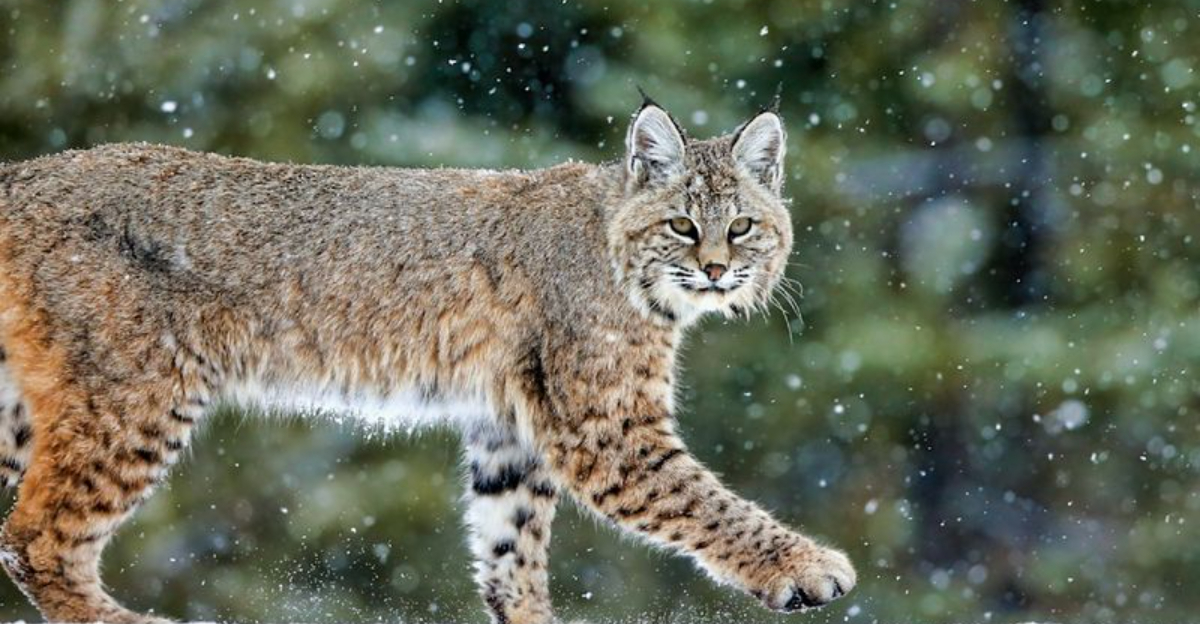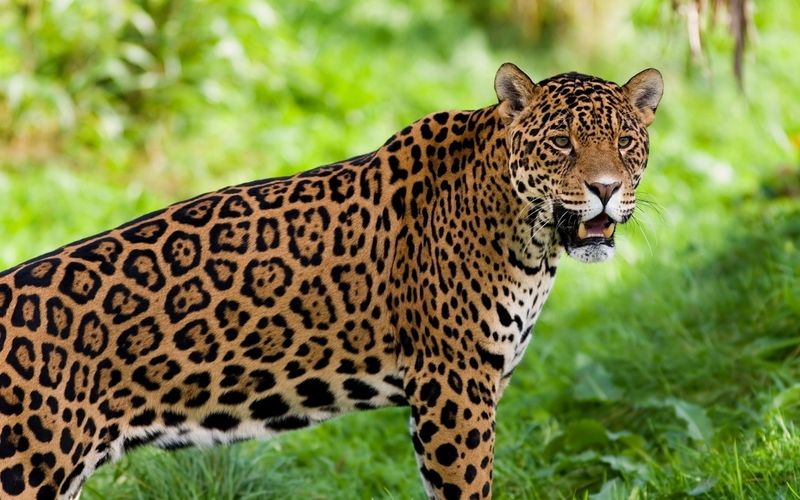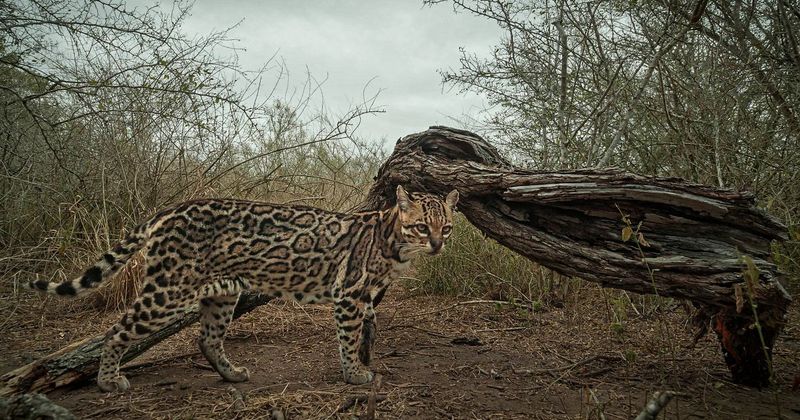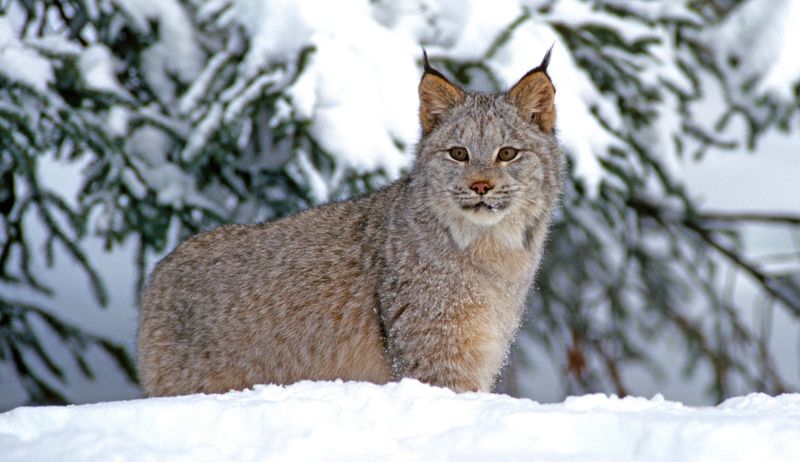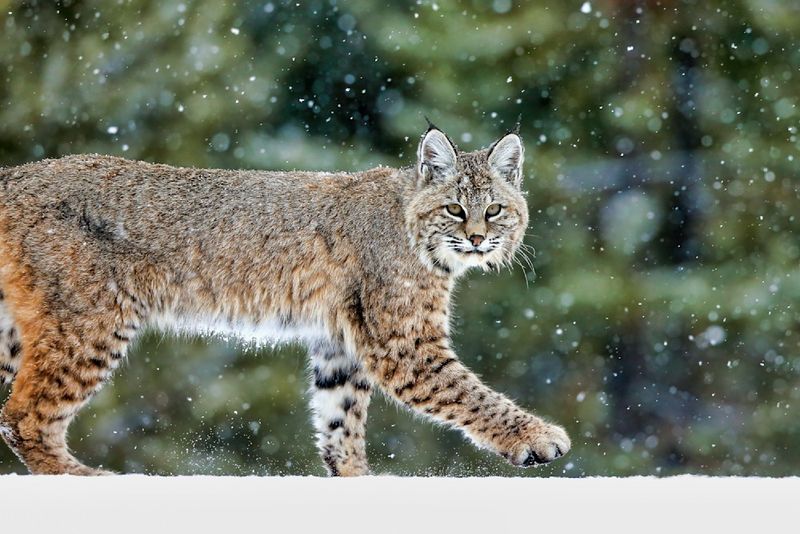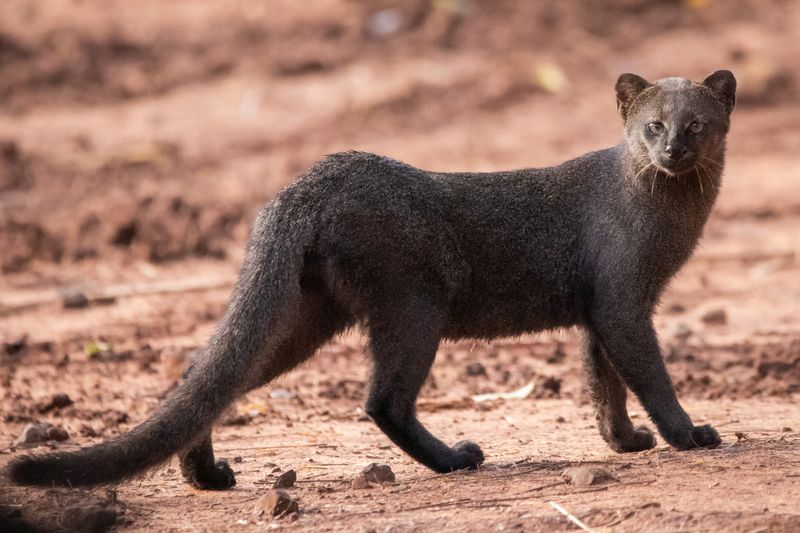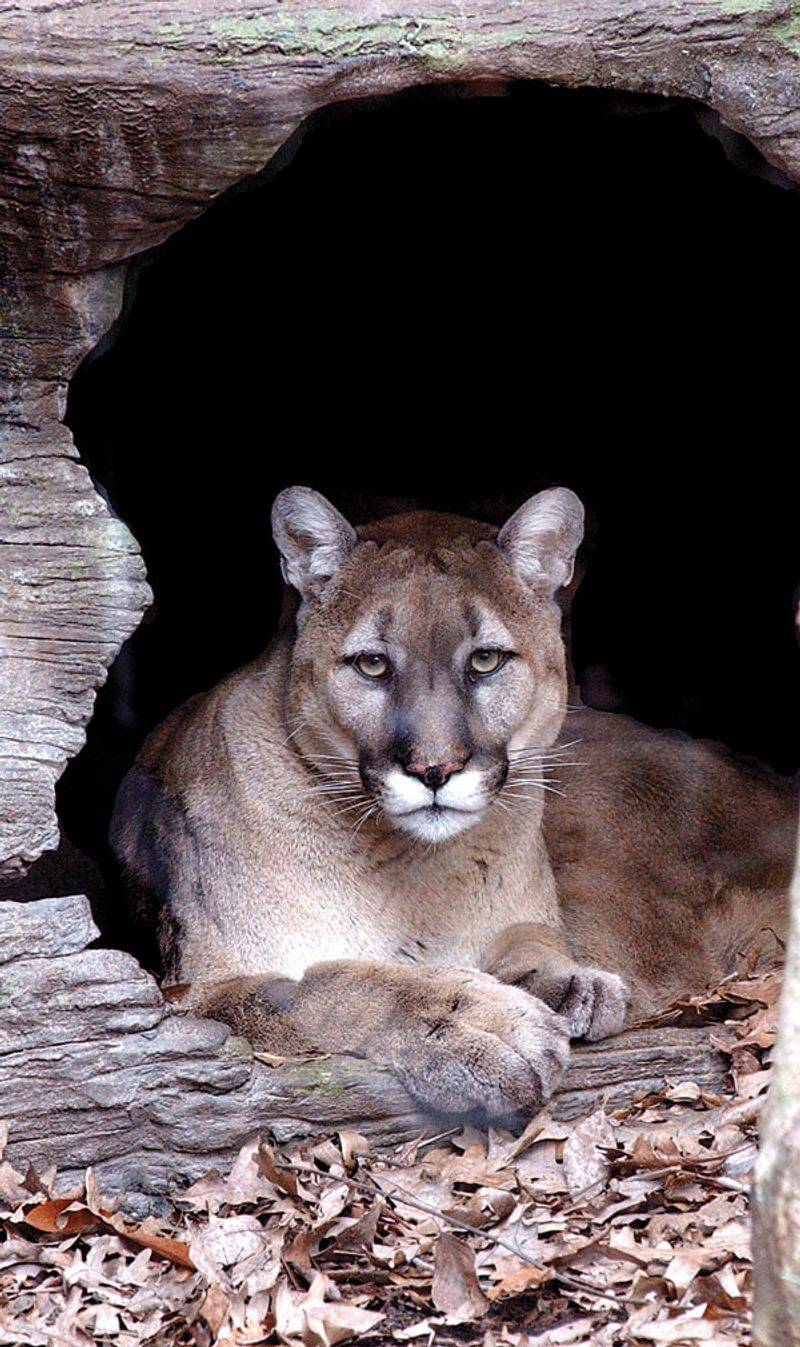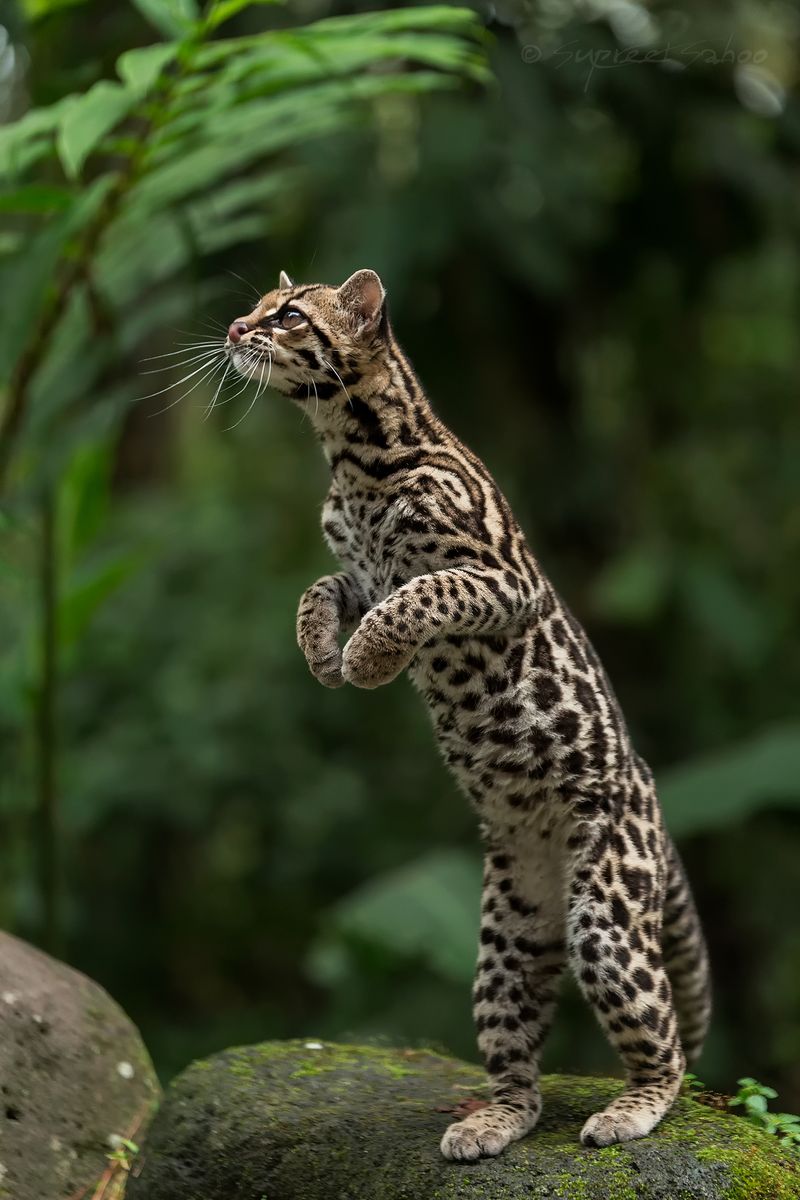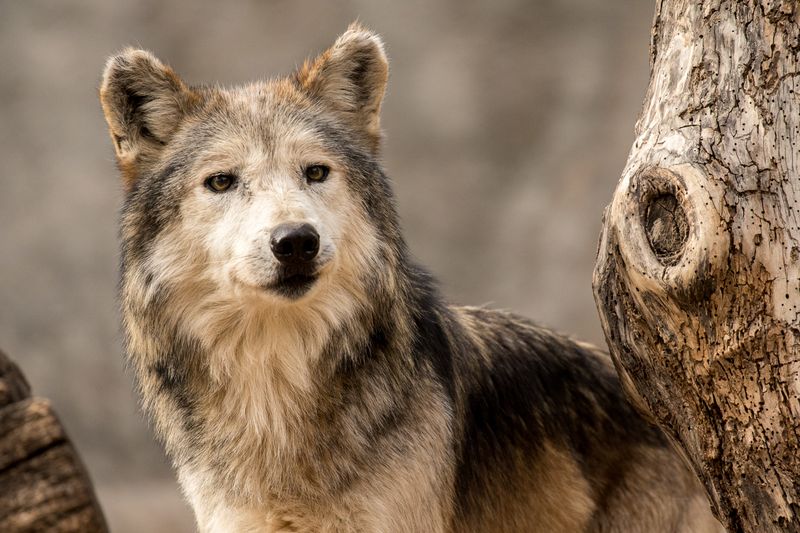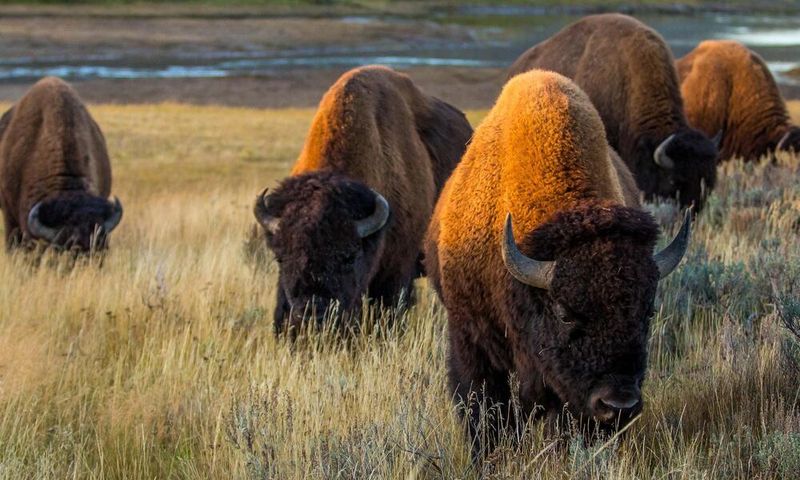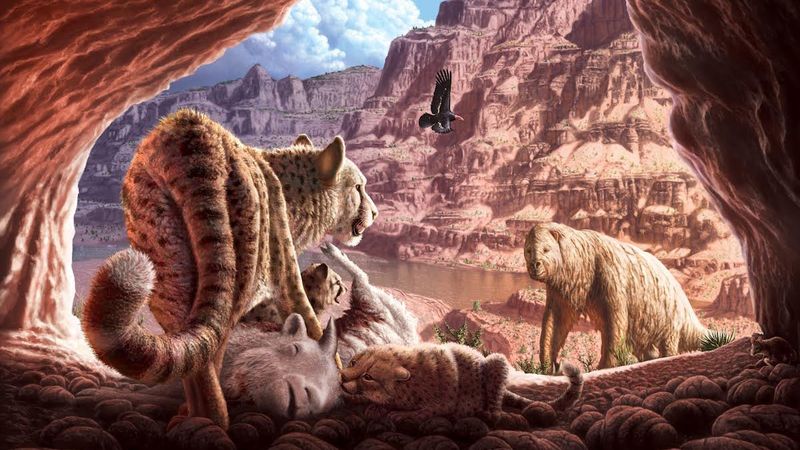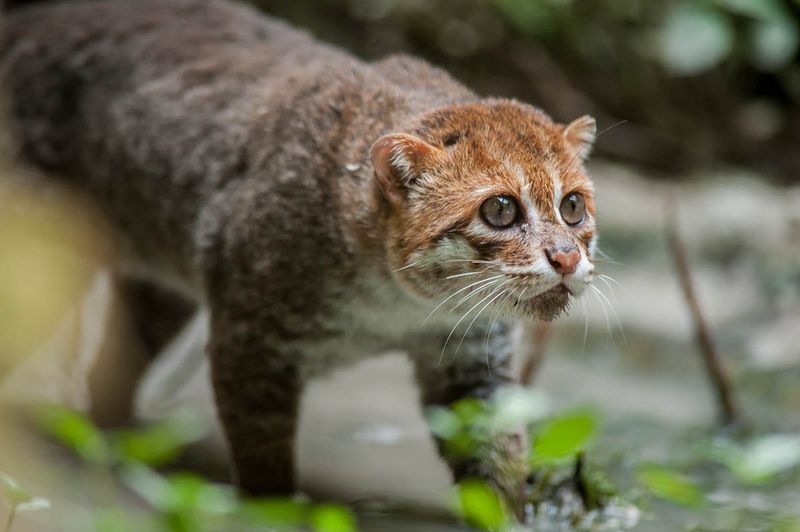📖 Table of Content:
- 1. Mountain Lion (Puma concolor)
- 2. Jaguar (Panthera onca)
- 3. Ocelot (Leopardus pardalis)
- 4. Canada Lynx (Lynx canadensis)
- 5. Bobcat (Lynx rufus)
- 6. Jaguarundi (Herpailurus yagouaroundi)
- 7. Eastern Cougar (Puma concolor couguar)
- 8. American Lion (Panthera atrox)
- 9. Margay (Leopardus wiedii)
- 10. Black-Footed Ferret (Mustela nigripes)
- 11. Mexican Wolf (Canis lupus baileyi)
- 12. Eastern Elk (Cervus canadensis canadensis)
- 13. Bison (Bison bison)
- 14. Sabertooth Cat (Smilodon fatalis)
- 15. Cheetah (Acinonyx jubatus)
- 16. Flat-Headed Cat (Prionailurus planiceps)
North America is home to a diverse array of wild cat species, each exhibiting unique adaptations and behaviors. Here’s an overview of some of the most majestic wild cats currently inhabiting the continent, as well as those that have recently vanished.
1. Mountain Lion (Puma concolor)
The mountain lion, also known as a cougar or puma, is the largest wild cat in North America. With a muscular build and a tan to gray coat, these solitary predators are powerful and elusive. Cubs feature blackish-brown spots, providing excellent camouflage. An adult male can reach up to 8 feet and weigh between 130 and 150 pounds. They roam primarily in 14 western states, with a small population known as the Florida panther in the southeast. While flourishing in the west, they are threatened in Florida. Their powerful presence adds to North America’s wild allure.
2. Jaguar (Panthera onca)
The third-largest cats in the world, known for their striking appearance. Their compact bodies are covered in a beautiful yellow coat with black rosettes, providing an exquisite camouflage in the dense forests. Although they were once widespread, they are now a rare sight in the U.S., occasionally seen in Arizona and New Mexico, close to the Mexican border. Jaguars are endangered under the U.S. Endangered Species Act. Their elusive presence and majestic aura continue to intrigue wildlife enthusiasts and conservationists alike.
3. Ocelot (Leopardus pardalis)
A medium-sized wild cat, captivates with its distinctive coat of dark rosettes and stripes on a golden-yellow background. Once roaming as far north as Arkansas, these enchanting cats now primarily reside in southern Texas, especially in the Rio Grande Valley. With an estimated population of just 50-100 individuals in the U.S., they are endangered under the U.S. Endangered Species Act. These graceful predators are a symbol of resilience and the need for ongoing conservation efforts to protect their dwindling numbers and unique beauty.
4. Canada Lynx (Lynx canadensis)
The Canada lynx is a medium-sized wild cat, perfectly adapted to the cold. Its tufted ears, short tail, and thick fur give it a distinct appearance. These cats are skilled hunters, primarily preying on snowshoe hares. Found in dense boreal forests across Alaska, Canada, and parts of the Rocky Mountains and Great Lakes, lynxes thrive in cold environments. Listed as threatened under the U.S. Endangered Species Act, they are a symbol of wilderness resilience. Their enigmatic presence adds to the mystique of North America’s northern landscapes.
5. Bobcat (Lynx rufus)
The epitome of adaptability among North American wild cats. Slightly larger than domestic cats, these agile hunters have a short, bobbed tail and a coat that varies from gray to brown. They thrive in diverse habitats, including forests, deserts, swamps, and suburban areas. Bobcats are found across the U.S., southern Canada, and Mexico. With a conservation status of least concern, their population is stable, allowing them to continue their role as vital predators in their ecosystems. Their adaptability makes them fascinating survivors in varied environments.
6. Jaguarundi (Herpailurus yagouaroundi)
The jaguarundi stands out with its weasel-like appearance, unlike typical wild cats. With a slender body, short legs, and a long tail, their coat varies from gray to reddish-brown. These agile hunters are primarily found in Central and South America, with rare sightings in southern Texas. Although listed as least concern globally, their presence in the U.S. remains uncertain. Jaguarundis are elusive and mysterious, adding a unique charm to their habitats. Their adaptability and unusual appearance spark curiosity and admiration among wildlife enthusiasts.
7. Eastern Cougar (Puma concolor couguar)
A subspecies of the cougar, was once a ghostly presence in the eastern United States. With a tan coat, it blended seamlessly into its forested environment. Declared extinct in 2011, the last confirmed sightings date back to the 1930s. Their absence marks a loss in the biodiversity of eastern forests. This majestic creature’s disappearance serves as a sobering reminder of the impact of habitat loss and hunting. Efforts to preserve other wild cat populations are essential to prevent further extinctions and maintain ecological balance.
8. American Lion (Panthera atrox)
The American lion was a formidable predator, exceeding the size of modern lions. It roamed the open plains of North America until it went extinct around 12,800 years ago. As one of the largest known felids, their size and strength were unparalleled. Their extinction is attributed to the end-Pleistocene extinction event. Though they no longer prowl the landscape, fossils remind us of their once-dominant presence. The American lion’s legacy is a testament to the diverse and vibrant wildlife that once inhabited prehistoric North America.
9. Margay (Leopardus wiedii)
A tree-dwelling cat, was once recorded in Texas but is now considered locally extinct in the U.S. Similar in appearance to the ocelot but more slender, margays possess extraordinary climbing abilities. Their long tail aids in balance as they navigate the forest canopy. Known for their arboreal lifestyle, they primarily inhabit the tropical forests of Central and South America. Although absent from the U.S., margays continue to captivate with their acrobatics and striking appearance, showcasing the beauty of nocturnal tropical wildlife.
10. Black-Footed Ferret (Mustela nigripes)
Though not a cat, the black-footed ferret is an important predator in grassland ecosystems, closely associated with prairie dog colonies. Declared extinct in 1979, a residual population was rediscovered in Wyoming in 1981. Their reintroduction highlights the significance of conservation efforts. With a slender body and striking black mask, they are nocturnal hunters. Their recovery story symbolizes hope and determination in bringing back species from the brink. As they emerge from burrows at dusk, black-footed ferrets remind us of nature’s resilience and the importance of preservation.
11. Mexican Wolf (Canis lupus baileyi)
The Mexican wolf, a subspecies of the gray wolf, experienced extirpation in the mid-1900s. Smaller and lighter in color than other gray wolves, they once roamed the southwestern United States. Reintroduced in 1998, they symbolize successful conservation efforts. Their haunting howls echo the untamed landscapes they inhabit. Despite past challenges, these resilient predators have slowly regained their footing in their native range. The Mexican wolf’s journey from near extinction to resurgence embodies nature’s tenacity and the ongoing commitment needed to restore balance to ecosystems.
12. Eastern Elk (Cervus canadensis canadensis)
The eastern elk was once a magnificent sight in the eastern United States. With impressive antlers and a robust build, they roamed lush meadows and forests. Extirpated in the mid-1800s, their disappearance marked a significant change in the region’s fauna. As a subspecies of elk, they played an essential role in their ecosystem. Their loss underscores the impact of overhunting and habitat destruction. Efforts to reintroduce similar elk species in the east aim to restore ecological balance and celebrate the enduring legacy of these majestic creatures.
13. Bison (Bison bison)
The bison was once a dominant presence across North America’s plains. Nearly driven to extinction by the late 1800s due to overhunting and habitat loss, they are now a conservation success story. Reintroduction efforts have revived bison populations, allowing them to roam freely again in designated areas. Their iconic humped backs and shaggy coats symbolize wilderness and resilience. Bison are a vital part of North America’s natural heritage and continue to captivate with their strength and endurance. Their story is one of recovery and ecological importance.
14. Sabertooth Cat (Smilodon fatalis)
Known for its elongated canines, was a fearsome predator during the Pleistocene epoch. These formidable hunters roamed the vast landscapes of North America, striking terror into the hearts of their prey. With powerful builds and impressive strength, they were apex predators of their time. However, they went extinct about 10,000 years ago, likely due to climate changes and competition. Their iconic canines and robust physiques leave a lasting impression, immortalized in fossil records. The sabertooth cat remains a symbol of prehistoric power and mystery.
15. Cheetah (Acinonyx jubatus)
Though associated with Africa, cheetahs once roamed parts of North America. Known for their incredible speed, these graceful predators are built for sprinting. Their distinctive tear stripes and spotted coats make them easily recognizable. The cheetah’s North American ancestors went extinct thousands of years ago, leaving only their legacy behind. Today, conservation efforts in Africa strive to protect existing populations. Their story is a testament to the dynamic shifts in Earth’s biodiversity over time. Cheetahs continue to fascinate with their elegance and unparalleled speed in the wild.
16. Flat-Headed Cat (Prionailurus planiceps)
While primarily found in Southeast Asia, the flat-headed cat has a unique appearance with a flattened skull. They thrive in wetland environments, feeding on fish and small mammals. Though they never inhabited North America, their specialized adaptations highlight the incredible diversity among wild cat species globally. Conservation efforts aim to protect their diminishing habitats. These elusive cats continue to intrigue researchers with their specialized hunting skills and distinctive features, offering insights into the varied evolutionary paths of felids worldwide.
